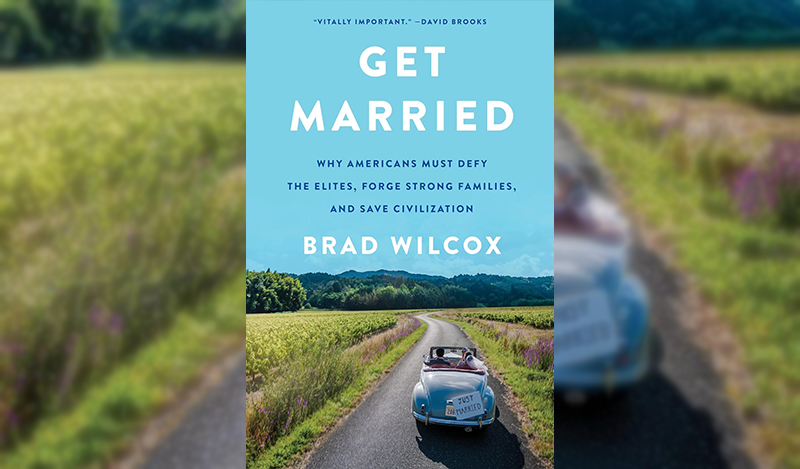- Feb 5, 2002
- 166,641
- 56,272
- Country
- United States
- Faith
- Catholic
- Marital Status
- Married
- Politics
- US-Others
Sometime in the mid-eighth century BC, shortly after killing his twin and successfully founding his new city, Romulus and his merry band of warriors found themselves in a quandary. It was, one could say, a very Jane Austen kind of quandary—namely, “it is a truth universally acknowledged that a single man in possession of a good fortune must be in want of a wife.”
We could quibble whether these earliest Romans were really in possession of a good fortune quite then, in a marshy new village where mosquitoes far outnumbered humans, but there is full agreement, at least, on the second point: Roman tradition holds that these single guys were desperately in want of wives. But where to get them? In a very Roman way, they solved the problem with war. In an episode that became known in later history as “the rape of the Sabine women,” the Romans went to a festival in a nearby town, and kidnapped the women, forcibly marrying them. A minor war resulted, when the women’s original relatives marched to get them back, but by then, it seems that the wives got used to their new lot and helped broker a peace. So, it all worked out just fine from the Roman perspective.
This tale, mythological as it is, offers a glimpse of the pre-Christian pagan view of marriage. It was, first and foremost, transactional. It was, also, predicated on an imbalance of power in a world where men had all the power and women had none. Only one side’s desires and wants mattered. Much of our ideal of good and happy marriages, by contrast, comes from a Christian perspective on this institution. And now, in his new book, Get Married: Why Americans Must Defy the Elites, Forge Strong Families, and Save Civilization, sociologist (and director of the National Marriage Project at UVA) Brad Wilcox shows clearly that marriage is the quintessential Christian realist institution.
To be clear, Wilcox shies away from phrasing it in quite such strong terms. Based on extensive survey data, he argues there are four groups whose marriages are thriving in America today: the Strivers, the Faithful, Asian Americans, and Conservatives. Wilcox’s Strivers are the highly educated elites—those who chose to pursue higher education, at least at the college level, but often beyond. The Faithful are a catch-all category Wilcox uses for all who are religious—not only Christians, but also Jews, Muslims, etc. The Asian Americans he considers include those of Indian descent, whose family-first ethic comes through in their attitude to marriage. Finally, the Conservatives are those with right-of-center views on the world.
In a society where fewer people are getting married and op-eds proliferate like mushrooms after an excellent rain about marriage being a bad deal for men (thanks, Andrew Tate) and women (thanks, NYT and its pro-polyamorous ways), Wilcox’s book and, really, his broader body of work, offer a useful service: facts aren’t feelings, and the data is clear. Marriage today is, in fact, the single best predictor of happiness and wellbeing—emotional, financial, physical—for both men and women at all stages of life.
But while marriages are thriving among the four sometimes overlapping groups Wilcox identifies, the book’s clearest takeaway is that it is the specifically Christian realist aspects of marriage that make it such a beneficent institution. In other words, even those whose marriages are thriving despite not being devout Christians still in fact operate by the sort of ingrained Judaeo-Christian values that continue to permeate our culture. This was particularly clear in the book’s description of marriages by secular Strivers and Conservatives.
Continued below.

 providencemag.com
providencemag.com
We could quibble whether these earliest Romans were really in possession of a good fortune quite then, in a marshy new village where mosquitoes far outnumbered humans, but there is full agreement, at least, on the second point: Roman tradition holds that these single guys were desperately in want of wives. But where to get them? In a very Roman way, they solved the problem with war. In an episode that became known in later history as “the rape of the Sabine women,” the Romans went to a festival in a nearby town, and kidnapped the women, forcibly marrying them. A minor war resulted, when the women’s original relatives marched to get them back, but by then, it seems that the wives got used to their new lot and helped broker a peace. So, it all worked out just fine from the Roman perspective.
This tale, mythological as it is, offers a glimpse of the pre-Christian pagan view of marriage. It was, first and foremost, transactional. It was, also, predicated on an imbalance of power in a world where men had all the power and women had none. Only one side’s desires and wants mattered. Much of our ideal of good and happy marriages, by contrast, comes from a Christian perspective on this institution. And now, in his new book, Get Married: Why Americans Must Defy the Elites, Forge Strong Families, and Save Civilization, sociologist (and director of the National Marriage Project at UVA) Brad Wilcox shows clearly that marriage is the quintessential Christian realist institution.
To be clear, Wilcox shies away from phrasing it in quite such strong terms. Based on extensive survey data, he argues there are four groups whose marriages are thriving in America today: the Strivers, the Faithful, Asian Americans, and Conservatives. Wilcox’s Strivers are the highly educated elites—those who chose to pursue higher education, at least at the college level, but often beyond. The Faithful are a catch-all category Wilcox uses for all who are religious—not only Christians, but also Jews, Muslims, etc. The Asian Americans he considers include those of Indian descent, whose family-first ethic comes through in their attitude to marriage. Finally, the Conservatives are those with right-of-center views on the world.
In a society where fewer people are getting married and op-eds proliferate like mushrooms after an excellent rain about marriage being a bad deal for men (thanks, Andrew Tate) and women (thanks, NYT and its pro-polyamorous ways), Wilcox’s book and, really, his broader body of work, offer a useful service: facts aren’t feelings, and the data is clear. Marriage today is, in fact, the single best predictor of happiness and wellbeing—emotional, financial, physical—for both men and women at all stages of life.
But while marriages are thriving among the four sometimes overlapping groups Wilcox identifies, the book’s clearest takeaway is that it is the specifically Christian realist aspects of marriage that make it such a beneficent institution. In other words, even those whose marriages are thriving despite not being devout Christians still in fact operate by the sort of ingrained Judaeo-Christian values that continue to permeate our culture. This was particularly clear in the book’s description of marriages by secular Strivers and Conservatives.
Continued below.

Marriage: The Most Essential Christian Institution - Providence
Review of Brad Wilcox's new book "Get Married: Why Americans Must Defy the Elites, Forge Strong Families, and Save Civilization"
